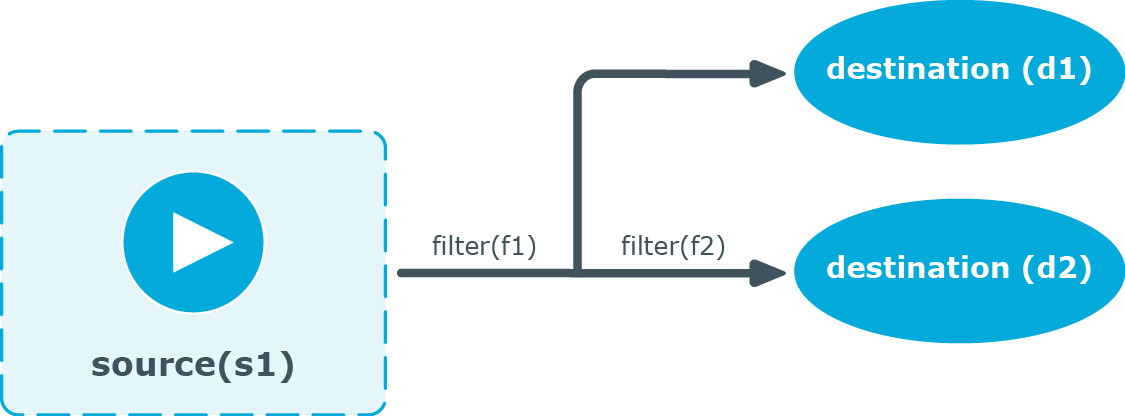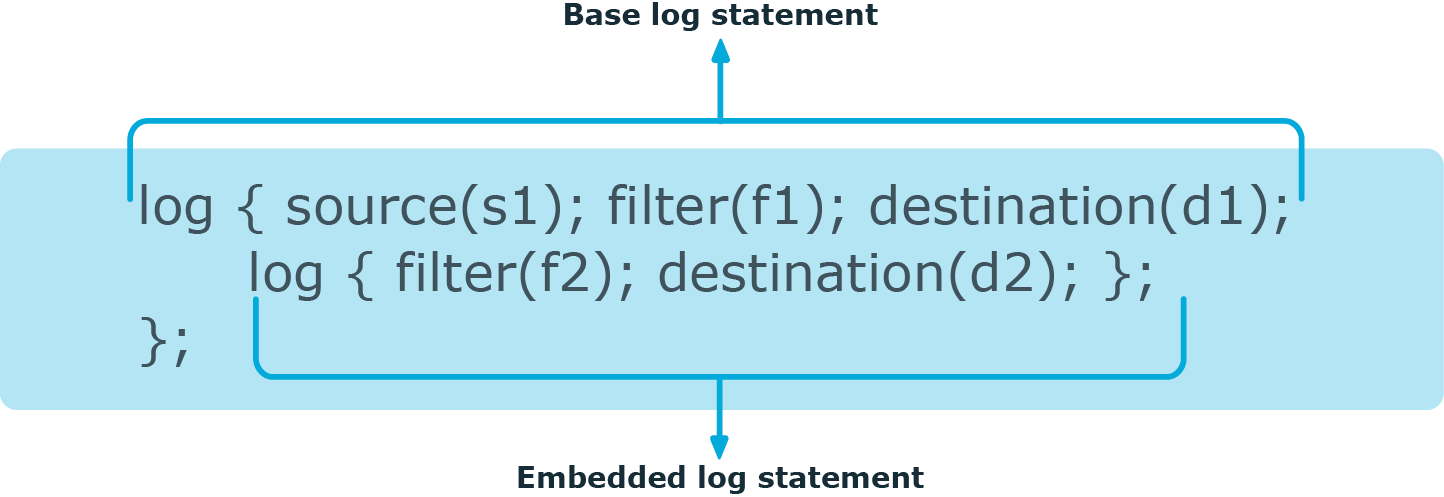syslog-ng OSE can detect if the remote server of a network destination becomes inaccessible, and start sending messages to a secondary server. You can configure multiple failover servers, so if the secondary server becomes inaccessible as well, syslog-ng OSE switches to the third server in the list, and so on. If there are no more failover servers left, syslog-ng OSE returns to the beginning of a list and attempts to connect to the primary server.
The primary server is the address you provided in the destination driver configuration and it has a special role. syslog-ng OSE nominates this destination over the failover servers, and handles it as the primary address.
When syslog-ng OSE starts up, it always connects to the primary server first. In the failover() option there is a possibility to customize the failover modes.
Depending on how you set the failback() option, syslog-ng OSE behaves as follows:
-
round-robin mode: If failback() is not set, syslog-ng OSE does not attempt to return to the primary server even if it becomes available. In case the failover server fails, syslog-ng OSE attempts to connect the next failover server in the list in round-robin fashion.
Example: round-robin mode
In the following example syslog-ng OSE handles the logservers in round-robin fashion if the primary logserver becomes inaccessible (therefore failback() option is not set).
destination d_network { network( "primary-server.com" port(601) failover( servers("failover-server1", "failover-server2") ) ); }; -
failback mode: If failback() is set, syslog-ng OSE attempts to return to the primary server.
After syslog-ng OSE connects a secondary server during a failover, it sends a probe every tcp-probe-interval() seconds towards the primary server. If the primary logserver responds with a TCP ACK packet, the probe is successful. When the number of successful probes reaches the value set in the successful-probes-required() option, syslog-ng OSE tries to connect the primary server using the last probe.
NOTE: syslog-ng OSE always waits for the result of the last probe before sending the next message. So if one connection attempt takes longer than the configured interval, that is, it waits for connection time out, you may experience longer intervals between actual probes.
Example: failback mode
In the following example syslog-ng OSE attempts to return to the primary logserver, as set in the failback() option: it will check if the server is accessible every tcp-probe-interval() seconds, and reconnect to the primary logserver after three successful connection attempts.
destination d_network_2 { network( "primary-server.com" port(601) failover( servers("failover-server1", "failover-server2") failback( successful-probes-required() tcp-probe-interval() ) ) ); };
If syslog-ng OSE is restarted, it attempts to connect the primary server.
If syslog-ng OSE uses TLS-encryption to communicate with the remote server, syslog-ng OSE checks the certificate of the failover server as well. The certificates of the failover servers should match their domain names or IP addresses — for details, see Encrypting log messages with TLS. Note that when mutual authentication is used, the syslog-ng OSE client sends the same certificate to every server.
The primary server and the failover servers must be accessible with the same communication method: it is not possible to use different destination drivers or options for the different servers.
NOTE: Client-side failover works only for TCP-based connections (including TLS-encrypted connections), that is, the syslog() and network() destination drivers (excluding UDP transport).
Client-side failover is not supported in the sql() driver, even though it may use a TCP connection to access a remote database.
For details on configuring failover servers, see network() destination options and syslog() destination options.



